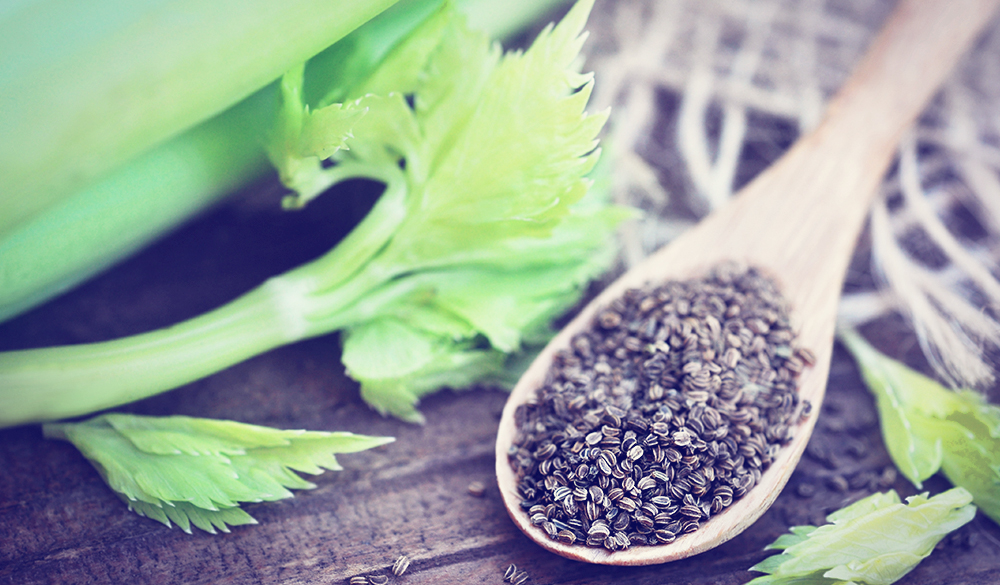Gout is a type of inflammatory arthritis characterised by pain, redness, swelling and extreme soreness of the joint following even a light touch.[1] Herbal treatments which show promise for the prevention of this chronic condition including Terminalia bellirica (bibhitaki), Prunus cerasus (sour cherry) and Apium graveolens (celery seed).
Symptoms of gout come on quickly and may last for a week at a time, occurring in one or more joints, with the potential for attacks to become frequent and severe without proper management.[1]
The clinical features of gout occur due to an inflammatory response to the deposition of monosodium urate (MSU) crystals in the joints and soft tissues.[2[1] ] Hyperuricaemia, an excess of uric acid in the blood defined as serum urate >6.8mg/dL, carries an increased risk of MSU crystal formation, though temperature, pH, mechanical stress, cartilage components, and other synovial and serum factors are also thought to play a role.[2]
Risk factors for gout include:[3]
• gender and age – gout most commonly affects men between the ages of 40 and 50
• diuretic use
• kidney disease
• family history
• overweight and obesity
• lifestyle factors – alcohol consumption; dehydration; crash dieting, fasting or overeating.
Though diet is often touted as a risk factor, there is little evidence that consumption, or avoidance of, purine-rich foods affects the risk of experiencing gout attacks. However, following a healthy diet to improve overall health is always recommended.[3]
Supporting the kidneys to clear uric acid and avoid hyperuricaemia is an important tactic for managing gout. Herbs which may be useful include:
Terminalia bellirica (bibhitaki)
A randomised, double-blind, placebo- and positive-controlled clinical pilot study involving 110 subjects with hyperuricaemia (in this study, defined as >10mg/dL) found that supplementation with 500mg of a standardised T. bellirica extract, Ayuric®, reduced serum uric acid levels to below [6].0mg/dL after 12 weeks of treatment, with no reported adverse events.[4]
Prunus cerasus (sour cherry)
Sour cherry juice has been shown to lower serum uric acid levels in both healthy volunteers[5] and animal models,6 indicating a potential for therapeutic use in hyperuricaemic individuals. The mechanism of action of sour cherry is through its inhibition of xanthine oxidase activity, a hepatic enzyme involved in converting purines to uric acid.
Apium graveolens (celery seed)
Celery is also a xanthine oxidase inhibitor, and was found to significantly (p<0.001) reduce serum uric acid levels in an animal model.[7] As with sour cherry, this may indicate a potential for translation into hyperuricaemic patients.
References
- Arthritis Queensland. Gout. Viewed 23rd July 2018, [Source]
- Martillo MA, Nazzal L, Crittenden DB. The crystallization of monosodium urate. Curr Rheumatol Rep 2015;16(2):400.[Abstract]
- Arthritis Australia. Gout and diet, 2015. Sydney: Arthritis Australia. Viewed 27th July 2018, [Abstract]
- Ushurani P, Nutalapati C, Pokuri VK, et al. A randomized, double-blind, placebo-, and positive-controlled clinical pilot study to evaluate the efficacy and tolerability of standardized aqueaous extracts of Terminalia chebula and Terminalia bellerica in subjects with hyperuricemia. Clin Pharmacol 2016;8:51-59. [Abstract]
- Bell PG, Gaze DC, Davison GW, et al. Montmorency tart cherry (Prunus cerasus L.) concentrate lowers uric acid, independent of plasma cyanidin-3-O-glucosiderutinoside. J Func Food 2014;11:82-90. [Abstract]
- Haidari F Jr, Mohammad Shahi M, Keshavarz SA, et al. Inhibitory effects of tart cherry (Prunus cerasus) juice on xanthine oxidoreductase activity and its hypouricemic and antioxidant effects on rats. Malays J Nutr, 2009;15(1):53-64. [Abstract]
- Dolati K, Rakhshandeh H, Golestani M, et al. Inhibitory effects of Apium graveolens on xanthine oxidase activity and serum uric acid levels in hyperuricemic mice. Prev Nutr Food Sci 2018;23(2):127-133. [Full Text]
DISCLAIMER:
The information provided on FX Medicine is for educational and informational purposes only. The information provided on this site is not, nor is it intended to be, a substitute for professional advice or care. Please seek the advice of a qualified health care professional in the event something you have read here raises questions or concerns regarding your health.



